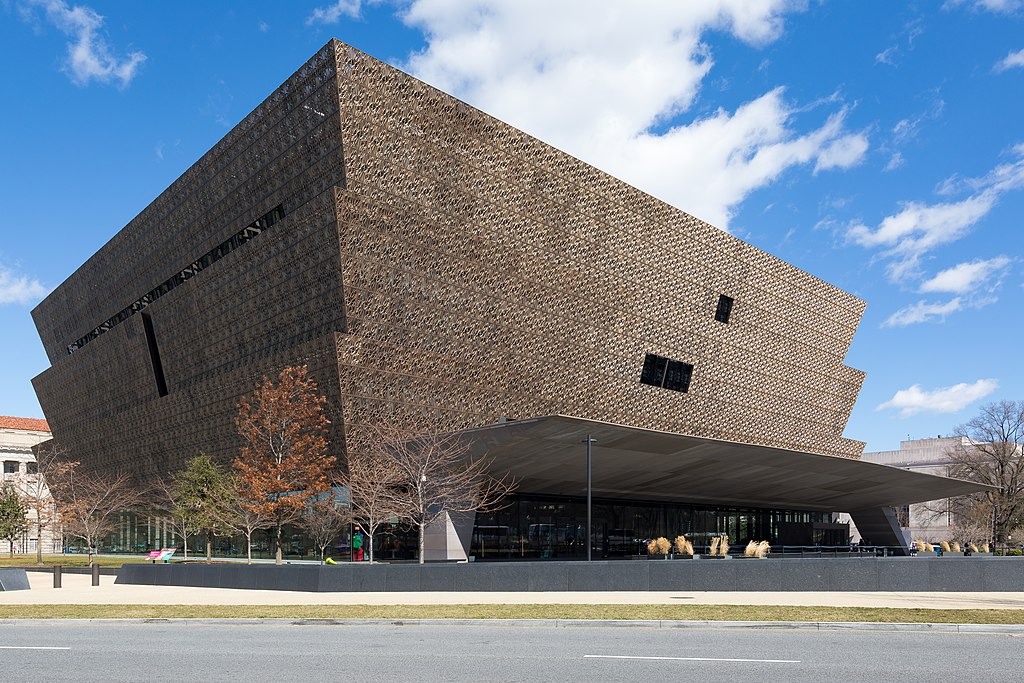Ernest, a longtime Washington D.C. resident, stood near the National Museum of African American History and Culture on the National Mall, reacting to President Donald Trump’s recent executive order targeting federally funded museums. He called the move an attack on America’s core value of diversity.
The order, issued Thursday, directs the Smithsonian Institution—which oversees 21 museums and the National Zoo—to remove what Trump called "improper ideology" and "divisive narratives." Vice President JD Vance, a Smithsonian Board of Regents member, was appointed to oversee the order’s execution.
Trump specifically cited exhibits like “The Shape of Power: Stories of Race and American Sculpture” at the Smithsonian American Art Museum, which explores how sculpture has reflected racial attitudes in U.S. history. The National Museum of African American History and Culture was also accused of portraying Western culture as harmful.
Cindy Werner, a Republican with the Frederick Douglass Foundation, supported the move, claiming it would unify Americans by emphasizing shared values. The order echoes rhetoric from Project 2025, a conservative policy framework that contrasts “woke revolutionaries” with those defending the American Revolution’s ideals.
However, many historians disagree. UCLA professor Kyle Mays called it a "fascist move" aimed at erasing racism and sexism from U.S. history. Historian Clayborne Carson argued that the order itself reflects ideological revisionism. Amy Rutenberg of Iowa State University expressed concern over potential damage to historical accuracy.
Senator Catherine Cortez Masto, a Smithsonian board member, condemned the order as a distraction from Trump’s broader political agenda, including cuts to Medicaid and tariff hikes.
Visitors to the National Mall, including Tina van Pelt and her family, were disturbed by the news. “It’s unpatriotic,” she said, “to deny our actual history.”



 U.S. Expected to Expand Travel Ban to More Than 30 Countries
U.S. Expected to Expand Travel Ban to More Than 30 Countries  IMF Deputy Dan Katz Visits China as Key Economic Review Nears
IMF Deputy Dan Katz Visits China as Key Economic Review Nears  EU Prepares Antitrust Probe Into Meta’s AI Integration on WhatsApp
EU Prepares Antitrust Probe Into Meta’s AI Integration on WhatsApp  Trump Administration Halts Immigration, Green Card, and Citizenship Processing for 19 Countries
Trump Administration Halts Immigration, Green Card, and Citizenship Processing for 19 Countries  Japan Approves $117 Billion Budget to Power Stimulus and Support Growth
Japan Approves $117 Billion Budget to Power Stimulus and Support Growth  U.S. to Reduce Import Duties on South Korean Autos Under New Trade Agreement
U.S. to Reduce Import Duties on South Korean Autos Under New Trade Agreement  Hikvision Challenges FCC Rule Tightening Restrictions on Chinese Telecom Equipment
Hikvision Challenges FCC Rule Tightening Restrictions on Chinese Telecom Equipment  Honduras Election Turmoil Intensifies as Nasralla Blames Trump for Shift in Results
Honduras Election Turmoil Intensifies as Nasralla Blames Trump for Shift in Results  Michael Dell Pledges $6.25 Billion to Boost Children’s Investment Accounts Under Trump Initiative
Michael Dell Pledges $6.25 Billion to Boost Children’s Investment Accounts Under Trump Initiative  Taiwan Signals Openness to Renew Ties with Honduras as Election Unfolds
Taiwan Signals Openness to Renew Ties with Honduras as Election Unfolds  U.S. Repatriation Flight Carrying 266 Venezuelan Migrants Lands in Caracas
U.S. Repatriation Flight Carrying 266 Venezuelan Migrants Lands in Caracas  Flights Briefly Grounded at Philadelphia International Airport After Bomb Threat Resolved
Flights Briefly Grounded at Philadelphia International Airport After Bomb Threat Resolved  Peru Moves to Declare State of Emergency at Chile Border as Migrant Tensions Rise
Peru Moves to Declare State of Emergency at Chile Border as Migrant Tensions Rise  China Urged to Prioritize Economy Over Territorial Ambitions, Says Taiwan’s President Lai
China Urged to Prioritize Economy Over Territorial Ambitions, Says Taiwan’s President Lai  Australia Progresses AUKUS Review as U.S. Affirms Strong Support
Australia Progresses AUKUS Review as U.S. Affirms Strong Support  Hong Kong Faces Low Turnout in “Patriots-Only” Election Amid Public Grief After Deadly Fire
Hong Kong Faces Low Turnout in “Patriots-Only” Election Amid Public Grief After Deadly Fire  Minneapolis Leaders Push Back as Trump Escalates Rhetoric Against Somali Community
Minneapolis Leaders Push Back as Trump Escalates Rhetoric Against Somali Community 































